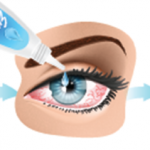New Criteria Too Restrictive
The diagnosis of Sjögren’s remains controversial and problematic. There is no simple test that is sensitive, specific, and noninvasive. Finding a novel biomarker that can identify Sjögren’s early and accurately will be of enormous benefit. In 2012, the ACR published new and stringent criteria for the classification of Sjögren’s.4 While narrowed criteria may be useful for research, these criteria are unnecessarily restrictive for use in the clinical setting.
Delaying the diagnosis, and thus the treatment, prolongs suffering and could impact the progression of disease. Until we have better tests available, there needs to be a clear message that many patients with Sjögren’s will not meet these stringent criteria, and should be managed based on the clinical picture. Clinical diagnosis is hardly a new concept to rheumatology. RA is often diagnosed based on clinical evaluation in the early stages. Research criteria do not need to be the same as clinical criteria. Rheumatologists use 4/11 criteria for lupus study populations, yet, for some, 3/11 criteria are considered sufficient to initiate treatment.
Most people in my situation would have been told that they did not have Sjögren’s. Because depression, thyroid disease, celiac, and fibromyalgia are common comorbidities in patients with Sjögren’s, they can distract providers from looking for an underlying cause that connects the scattered symptoms.
Medical Management and Clinical Studies
While some progress has been made in the treatment of dry eyes and dry mouth, few studies have looked at the impact that treatments have on systemic manifestations. The lack of clinical studies for Sjögren’s is astounding, given its high prevalence. Without such basic information, how can we possibly know if early intervention will make a difference?
Clinical studies for Sjögren’s tend to be small, short term, and poorly controlled. According to a recent review by Ramos-Casals et al,5 only five studies have examined the use of hydroxychloroquine, a mainstay of treatment. Only one of these was a randomized controlled trial. Two other commonly used medications, prednisone and methotrexate, have not been specifically studied for their impact on extraglandular manifestations. While new biologic agents keep appearing on the market, they are almost exclusively studied in other diseases. Because my disease has been severe, I have gone out on a limb and tried a number of these medications—without much success—despite a lack of evidence for their use. I’m brave enough, and desperate enough, to take big risks. But having no data to support these “n of 1 experiments” is rather unsettling.


